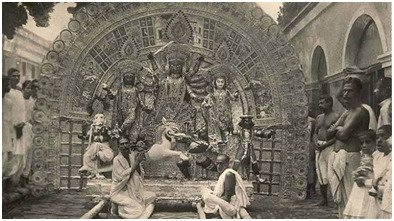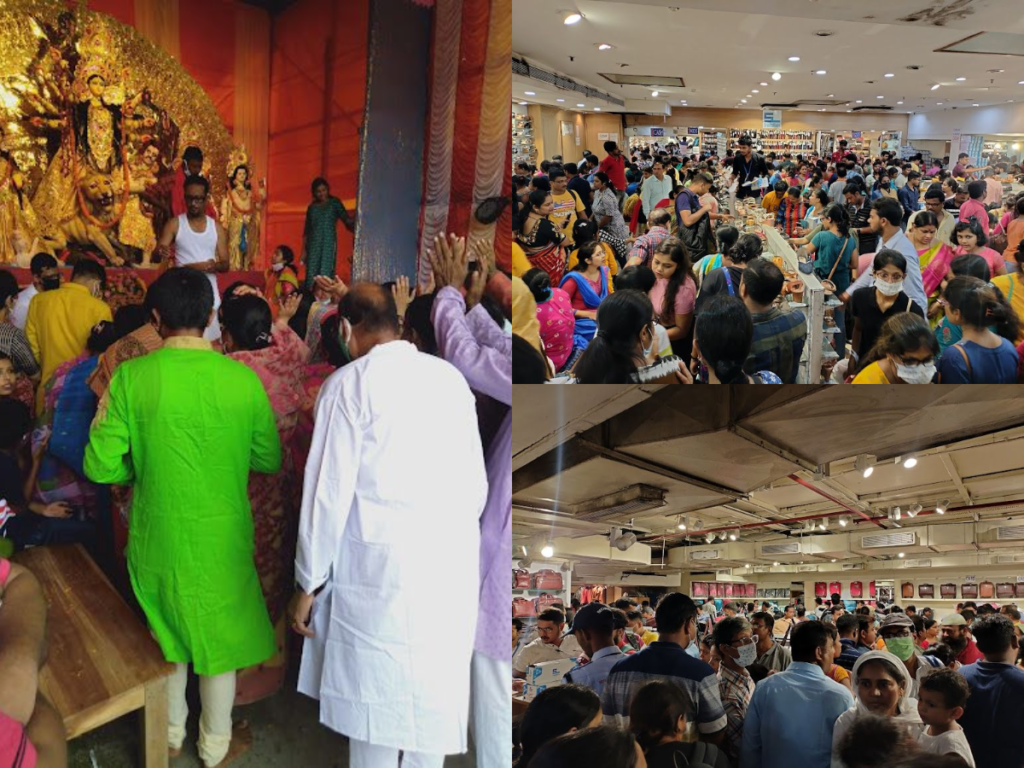Durga Puja 2020 Dates - History Of Durga Puja

There is popular hearsay that the Bengalees can smell Durga Puja. In its true sense, it is not an exaggeration at all. With the advancement of September, while the coral Jasmines spread over the green beds of grass and the Catkins start swaying with the light breeze, a bong heart beats faster as it denotes the anticipation of the homecoming of MaaDurga.
History of Durga Puja in Bengal
The vast cultural festival of Durga Puja has an ambiguity over its historical background. Though the Durga Puja dates back to ancient periods, it was the VastantiPujo in the Bengali season of Vasanta, which was the major event in Bengal then. However, the point of dispute is who started and made this Akalbodhan of Ramachandra the most popular and annual festival of Bengal. A group of people says that Raja Nabakrishna Deb of ShobhabazarRajbari started the Durga Puja with such grandeur in 1757. Another group says that the SabarnaRoychudhury family of Behala started this puja with flashes of festivity in 1610. A few historians depict it as the zamindars of the districts of Bengal who started this puja.

Types of Durga Puja
From the zamindars of the medieval period to the present day peoples’ puja (SarbojoninDurga Puja), Durga Puja has seen a lot of transitions over periods. The typology of Durga Puja can be drawn from various perspectives. From the type of the idol of MaaDurga to the rituals of puja, from the type of pandal to the flavour of puja- everything comes under the typology of the puja. That is why Durga Puja is so vibrant and different from other pujas.

Economy and Durga Puja
Every cultural gathering resonates with the economy of a region, but it is unknown that any religious festival contributes about 3% of the GDP of a state, involving more than 32,000 crore Indian Rupees. The economy of this region starts to flood, encompassing the puja. From the idol making to the management of puja, from the foods to clothes, from the musicals to the dancing crews, from the farmers to the businessmen, from the rural Bengal to the urban Bengal, irrespective of class and creed, every people gets engaged with the economic activities related to this puja a couple of months before the puja.

Durga Festivity
From the grandparents and the great grandparents, the new generations of a family must have heard of these lines that briefly say that the puja has not been similar to their time. That may be true because change is the ultimate destiny. With time, festivity has taken charge of puja, especially in the urban settings, where people enjoy the puja with thematic pandals and idols, foods, and so on during these four days. A popular note can be added to this festival by watching the scale of the event ‘Religion is individual, but the festival is for all.’

Four days long, Durga Puja is more than the worshipping of Goddess Durga. It is the celebration of life. Bengalees wait for a year for the Sounds of Dhakduring Durga Puja time, for buzz-filled streets, for roaming around wearing new outfits, having pujobhogs, meeting people in adda, and at the end, bidding our beloved mother a goodbye by saying abareshomaa (come back next year).
